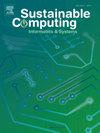Estimating energy consumption of neural networks with joint Structure–Device encoding
IF 3.8
3区 计算机科学
Q1 COMPUTER SCIENCE, HARDWARE & ARCHITECTURE
引用次数: 0
Abstract
The surge in IoT devices has led to an increase in energy consumption, necessitating the optimization of neural networks deployed on these energy-constrained devices to reduce power usage. Although various techniques, such as pruning and quantization, can reduce the size and computational requirements of neural networks, the resulting energy savings still need to be verified through resource-intensive inference processes, which require cumbersome adjustments to measurement devices and neural network deployment. To address these challenges, we propose SDEnergy, a novel approach that combines Structure–Device encoding to quickly and accurately predict the Energy consumption of neural networks across various devices. SDEnergy utilizes graph neural networks to extract structural features of neural networks and employs fully connected networks to extract device features, using their fusion for energy consumption prediction. Experimental validation demonstrates that SDEnergy has established state-of-the-art results on our dataset based on NAS-Bench-101 and various IoT device parameter scenarios, with a mean absolute percentage error of 5.35%.
基于结构-设备联合编码的神经网络能量消耗估计
物联网设备的激增导致了能源消耗的增加,因此需要优化部署在这些能量受限设备上的神经网络,以降低功耗。尽管修剪和量化等各种技术可以减少神经网络的大小和计算需求,但由此产生的节能仍然需要通过资源密集型的推理过程来验证,这需要对测量设备和神经网络部署进行繁琐的调整。为了应对这些挑战,我们提出了sdenenergy,这是一种结合结构-设备编码的新方法,可以快速准确地预测神经网络在各种设备上的能量消耗。SDEnergy利用图神经网络提取神经网络的结构特征,利用全连接网络提取设备特征,利用它们的融合进行能耗预测。实验验证表明,SDEnergy在基于NAS-Bench-101和各种物联网设备参数场景的数据集上建立了最先进的结果,平均绝对百分比误差为5.35%。
本文章由计算机程序翻译,如有差异,请以英文原文为准。
求助全文
约1分钟内获得全文
求助全文
来源期刊

Sustainable Computing-Informatics & Systems
COMPUTER SCIENCE, HARDWARE & ARCHITECTUREC-COMPUTER SCIENCE, INFORMATION SYSTEMS
CiteScore
10.70
自引率
4.40%
发文量
142
期刊介绍:
Sustainable computing is a rapidly expanding research area spanning the fields of computer science and engineering, electrical engineering as well as other engineering disciplines. The aim of Sustainable Computing: Informatics and Systems (SUSCOM) is to publish the myriad research findings related to energy-aware and thermal-aware management of computing resource. Equally important is a spectrum of related research issues such as applications of computing that can have ecological and societal impacts. SUSCOM publishes original and timely research papers and survey articles in current areas of power, energy, temperature, and environment related research areas of current importance to readers. SUSCOM has an editorial board comprising prominent researchers from around the world and selects competitively evaluated peer-reviewed papers.
 求助内容:
求助内容: 应助结果提醒方式:
应助结果提醒方式:


